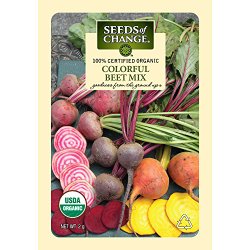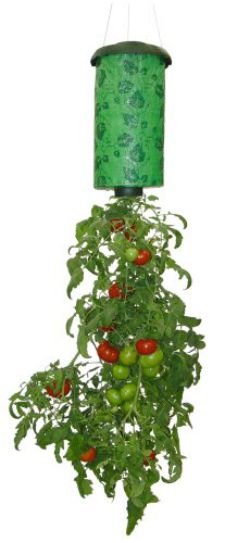Fall Is A Great Time For Planting Trees & Shrubs
There is a false perception in the gardening world that fall is the end of the growing season. In fact, it is quite the contrary. Fall is an ideal season for planting trees, shrubs and other assorted plants. The key is encouraging good root growth. Planting trees and shrubs in fall enables the root systems to grow before the hot summer returns.
Smaller plants will be established before winter sets in, and get a head start over shrubs in the spring. Larger plants will also get a head start since a general rule of thumb is one year per one inch of trunk diameter.
Fall officially begins with autumnal equinox in late September. The ideal time to begin planting trees and shrubs is six weeks before the first sign of hard frost. September through November is the ideal time for tree planting because it allows the roots to become established before the ground freezes and winter sets in. However, it is highly recommended that you do not continue planting trees too late into the fall because this can have a negative impact on plant health.
Cooler, wetter weather is the perfect time for tree planting. With an increase in rainfall and cooler temperatures in the fall, less watering is needed. As tree shoot growth halts, the trees require less water because the days are cooler and shorter and the rate of photosynthesis decreases. Stable air temperatures also promote rapid root development. Soils stay warm well after the air temperature cools, also encouraging root growth. During shoot dormancy, trees grow to establish roots in new locations before warm weather stimulates top growth.
There are several benefits to fall planting. Trees planted in the fall are better equipped to deal with heat and drought in the following season. Another great reason to plant your shrubs in the fall is because you can pick your trees and shrubs by the fall color they produce. Avoid planting broad leaved evergreens in the fall such as rhododendrons, azaleas, boxwoods and hollies. If planted, provide them with protection from winter winds and have them treated with an anti desiccant. Some tree species that are recommended for fall planting include the maple, buckeye, horse chestnut, alder, catalpa, hackberry, hawthorn, ash, honey locust, crabapple, amur corktree, spruce, pine, sycamore, linden and elm.
Article from saveatree.com
Birdscaping
BIRDSCAPING
As wildlife habitats are threatened by development, the creation of a bird-friendly environment that provides food, water and shelter is crucial to the existence of our wild bird population. Caring for our feathered-friends is an educational and enjoyable activity for the entire family that brings beauty and song to our lives.
Benefits of Wild Birds
Birds are great guests to have in your yard, garden or landscape, and they provide more benefits than many homeowners and gardeners realize. Wild birds can…
- Control insects by feasting on both flying and crawling insects, as well as spiders, slugs, snails and other creepy-crawlies.
- Pollinate plants by flitting from flower to flower as they seek out insects or eat seeds, taking pollen along between blooms.
- Manage weeds as they consume copious amounts of weed seeds before the seeds ever have a chance to sprout.
- Control rodents when raptors visit the yard in search of mice, rats, gophers, voles or other unwanted pests.

Attracting Backyard Birds
Fortunately, it is easy to attract a wide variety of backyard birds when you offer them what they need most – food, water and shelter.
Food for Birds
Wild birds rely on both natural and supplemental food supplies so it is important to consider both when birdscaping. Feeding the birds is most important in the winter when natural food is scarcer, but they will visit feeders at any time of year. Migratory birds require additional food in the spring and fall as they pass through the region and nesting birds will utilize feeders in the summer.
Tips:
- Provide a variety of natural foods for birds by planting berry bushes, seed-bearing flowers, nectar-rich flowers and sunflowers. Leave windfall fruit on the ground for birds to nibble. Minimize pesticide use so birds can feast on insects as well.
- Add supplemental feeders to your yard, such as birdseed feeders, suet feeders and nectar feeders. Clean feeders weekly to avoid mold that can be dangerous to birds, and be sure feeders are full when birds need them most.

Water
Improve your backyard bird habitat by adding water. Birds require a constant supply of clean water for drinking and bathing. This is especially important in late summer, when water is scarce, and in the winter, when it is frequently frozen.
Tips:
- Place bird baths in a protected location safe from predators, and keep the baths filled at all times so a fresh supply of water is constantly available.
- Scrub off algae as soon as it is appears and thoroughly was the bird bath each week to minimize feces contamination or other messes in the water.
- Provide motion for greater attraction by using a bubbler, wiggler, dripper or fountain. Birds will see the sparkles of the moving water and will hear the splashes from great distances, so more birds will visit.
- Use Mosquito Dunks to safely prevent mosquito larvae in warm weather. A clean bird bath with moving water will also harbor fewer insects.
- Add an outdoor-safe submersible heater to the bath in winter to keep the water liquid instead of frozen, or consider using a fully heated bird bath during the coldest months.

Shelter
It is important to offer safe and comfortable shelter for your wild birds to nurture their young, protect them from predators and shield them from the elements. Planting evergreen trees and shrubs and providing bird houses, along with roosting boxes and pockets, are all beneficial additions to your birdscape.
Tips:
- Choose both deciduous and evergreen landscaping trees and shrubs to offer birds different types of shelter in all seasons.
- Minimize pruning to give birds denser, more secure shelter to take advantage of when they feel threatened.
- Plant in layers and create thicket-like pockets or corridors in your landscape so birds can move around freely without feeling exposed.
- Supplement the shelter in your yard with good quality bird houses, winter roost boxes or nesting pockets to give birds even more options to stay safe and secure.
When you meet birds’ needs for food, water and shelter, your birdscape will soon be home to a fun and friendly flock of backyard birds.
Vegetables That Are Perfect to Plant in Late Summer
Vegetables That Are Perfect to Plant in Late Summer
The long dog days of summer are here as the days are hotter and the sun sets late into the night. Any cool season vegetable you had in your garden are at the end of their days and warm season veggies are still going strong. Now it is time to grow vegetables that are perfect to plant in late summer for the fall.
Squash
Squash plants encompass many different subspecies of plants. In the squash family you have cucumbers, zucchini from yellow crookneck to pattypans to green beauties. Then add in your winter squash like acorn, butternut, and gourds. Don’t forget the many varieties of pumpkins that also fall into this category from Jack O’Lanterns to minis and sugars to Giants. All of these plants are perfect to get into your garden around the 4th of July.
Winter squash is planted in the summer and then can overwinter for months at a time. Planting pumpkins in July allows them to be ready to carve by Halloween and cooked up for pumpkin pie by Thanksgiving.
Root Vegetables
A few root vegetables do best when planted in late summer and then come to maturity in the cool days of fall. This is the perfect time to plant beets, turnips, fennel, kohlrabi, and radishes. You can also get in a few succession plantings of carrots if you live where you get cool summer nights. Bunching onions like scallions and garlic chives also do great when planted in late summer.
Greens
Quite a few green vegetables do best when planted in late summer. This allows the seeds to warm up and germinate, but the plant matures as the nights get longer and cooler. Start from seed Swiss Chard, kale, collard greens, cabbage, broccoli, and spinach. These plants will need to be well watered until the summer heat dies down to build a healthy root system.
Tomatoes
Tomatoes are a true heat-loving plant! When grown in late summer, start with transplants instead of seeds as it is too warm for them to germinate. Once the temperatures drop below 75 degrees then the plant will flower and produce buds. Tomatoes like to produce in the sweet spot between 55° and 75° which is perfect fall weather!
Do you have a favorite vegetable you are planting now for fall harvest? If so, what is it!?









